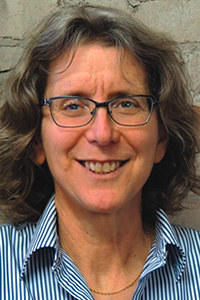
BioCycle August 2017
This editorial is about random realities. Think of these realities as pieces of a puzzle. Some pieces are the problems. Others are the solutions. The problems, if not addressed very soon, will spiral our world in a negative direction. The solutions, when connected in the puzzle and implemented very soon, will spiral our world in a positive direction.
This week, I listened to an interview, and a CNN Town Hall, with former Vice President Al Gore, who has dedicated the better part of his career to solving the climate change crisis. The media coverage was focusing on the newly released documentary, An Inconvenient Sequel: Truth To Power, which builds on Gore’s original book and documentary, An Inconvenient Truth, released in 2006. Wikipedia notes that An Inconvenient Sequel “addresses the progress made to tackle the problem and Gore’s global efforts to persuade governmental leaders to invest in renewable energy, culminating in the landmark signing of 2016’s Paris Agreement.”
One of the climate impact realities in the documentary is the rapid melting of icebergs. That reality played out last month when a Delaware-sized iceberg broke off the Larsen C Ice Shelf in Antarctica. The 2,240-square-mile ice chunk completely separated from Antarctica between July 10 and 12, 2017. This past Sunday, a lead story in the New York Times described the harsh realities of drought and soil degradation in Africa (see “Loss of Fertile Land Fuels ‘Looming Crisis’ Across Africa,” (7/30/17)).
And then there is this reality. Just this Wednesday (Aug. 2), the National Oceanic and Atmospheric Administration announced that scientists have determined this year’s Gulf of Mexico “dead zone,” an area of low oxygen that can kill fish and marine life, is 8,776 square miles — about the size of New Jersey. It is the largest measured since dead zone mapping began there in 1985, stated the press release. “This large dead zone size shows that nutrient pollution, primarily from agriculture and developed land runoff in the Mississippi River watershed is continuing to affect the nation’s coastal resources and habitats in the Gulf.”
Basically, there is not a shortage of “problem pieces” in our puzzle. Nor is there a shortage of “solution pieces,” which we write about continuously in BioCycle, and speak about at our Conferences. These solution pieces come with major investments, jobs and profits, versus the problem pieces that are compounding into huge social, environmental and economic costs. And when we start connecting our solution pieces together to complete the puzzle, they compound into huge social, environmental and economic benefits.
Take composting and anaerobic digestion (AD) as examples. Keeping organics out of the landfill mitigates the methane problem piece. Use of compost and digestate rejuvenates depleted soils, mitigates nutrient runoff and sequesters carbon — three huge problem pieces. Biogas from AD generates renewable energy and can replace fossil natural gas. Our challenge is how to move our solutions into the mainstream — a goal accomplished by the solar and wind industries. The fact that major institutional investors are showing up at BioCycle Conferences is very significant.
I just read a review of An Inconvenient Sequel in The New Yorker. The author went to a screening in Portland, Oregon, hosted by Renew Oregon, and wrote that at the end, a Renew Oregon staffer, noted: “Change at the local level is the best way to create real change in our state, and in our country, and in our world. … No matter how climate change is framed — no matter how sunny or doleful the vision — it’s what happens off the screen, and off the page, that will decide whether the planet remains habitable.”









